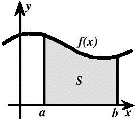Math in the Middle Institute Partnership
Date of this Version
2008
Abstract
While Girolamo Cardano was working on solving cubic and quadratic equations in 1539, he encountered some formulas that involved square roots of negative numbers. In 1545 Cardano published Ars Magna, where he presents the first recorded calculations that involve complex numbers. Then in 1572, Rafael Bombelli published the first three parts of his Algebra. He is known as the inventor of complex numbers, because he identifies some rules for working with them. Bombelli also shows how complex numbers are very important and useful. From Bombelli’s list of rules for adding, subtracting and multiplying the complex numbers, he was able to analyze the cubic equations that Cardano was trying to solve in his paper Ars Magna. Bombelli was able to use his rules for operations with complex numbers to solve the cubic equations that produced an expression that contained a square root of a negative number.



Comments
Paper submitted in partial fulfillment of the requirements for the Master of Arts in Teaching with a Specialization in the Teaching of Middle Level Mathematics in the Department of Mathematics.